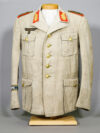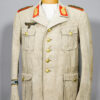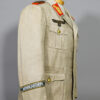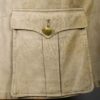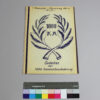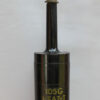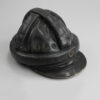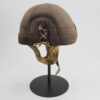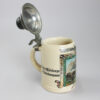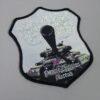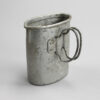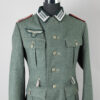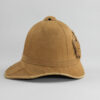Rommel’s jacket?
Inventory number: 1.429
Erwin Rommel is a historical figure who is inextricably linked to the history of armored vehicles. But Rommel is also a myth that needs to be critically scrutinized in a museum.
Erwin Rommel (1891-1944) was a professional soldier who served in three German armies. He joined the Württemberg Army in 1910 and took part in the First World War on the Western Front as an officer. During the Weimar Republic, he served in the Reichswehr. In the Second World War, Rommel fought in France, North Africa and Italy, ultimately with the rank of field marshal.
The myths surrounding Rommel are in line with the classic Wehrmacht myths of professionalism and honorability, which are supposedly separable from Nazi ideology. Rommel willingly allowed himself to be built up into a heroic figure for National Socialist propaganda. He admired Hitler and served the National Socialist regime loyally. He was not an anti-Semite himself and does not appear to have participated in any mass crimes, but he knew about them. The turning point for his loyalty to Hitler seems to have been the Allied invasion in June 1944. After this, Rommel no longer believed in victory and came into conflict with Hitler. In October 1944, he was forced to commit suicide because he knew about the July 20th coup d’état. This made him particularly suitable for supporting the myth of the “clean Wehrmacht” after the war. The Western Allies also contributed to the myth and probably coined his nickname “Desert Fox”. By exaggerating his military achievements, their victory over him was also a praise of their own abilities.
By exhibiting personal objects of famous people, museums can contribute to the creation of myths about them. This is why a particularly close look is required here with regard to the origin of the object and its critical historical classification. The origin of the uniform jacket (called provenance), which was exhibited for years as “Rommel’s jacket”, promised its originality. It was given to the museum by a person who demonstrably knew Rommel personally. The individual parts of the jacket are undoubtedly originals from the period and show clear signs of wear. The khaki of the Afrika Korps has been faded by the sun to a light beige. However, some inconsistencies became apparent during the research.
The jacket is said to have been discarded and given away by Rommel on the day he was promoted to General Field Marshal in 1942. However, this jacket bears these shoulder pieces – an indication of a later alteration. The early creation of myths about Rommel helped with the research, as masses of photos of him exist. Particularly during the war in Africa, it was not possible to carry an unlimited amount of clothing, which is why it can be assumed that the majority of his jackets were documented in the photos. However, this jacket is not found in any known picture of him and differs significantly from his other jackets in some details. For example, he did not wear the familiar Afrikakorps sleeve stripes, but he did wear cuffs, which are missing on this model. He also preferred uniform jackets with straight pocket flaps. There is only one photograph of him wearing a jacket with curved pocket flaps like this model, but this is clearly a different one to the one in the museum’s possession.
It is possible that this object is an unusual model of Rommel’s jacket, in which he was never photographed. Based on this evidence, it is more likely that it is not one of Rommel’s jackets. It was put together later and given to the museum, probably to help preserve the Rommel myth. A museum is often offered objects from well-known personalities. If this person is important for the story the museum wants to tell, problems can quickly be overlooked in the excitement about the new object. For this reason, a museum must constantly re-examine its pieces because new research possibilities are always available. Work on the objects does not stop as soon as they have been placed behind glass. The examination of the person to whom the object belonged must also continue.
Object of the month
(short) stories from the depot
Unfortunately, many objects cannot currently be shown in the exhibition for conservation reasons. Here you will find unusual objects and exciting stories of special pieces from the depot

